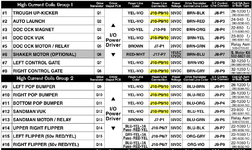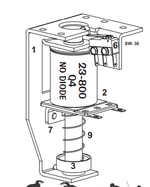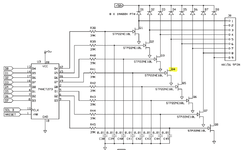I have a SM which suddenly stopped working when I shot Doc Ock: the ball stayed there and after a moment the DMD read: "Operator alert: Doc Ock malfunction".
It turns out F8 was blown. This is the fuse for "50VDC B" which powers everything on J10-P9/10. After poking my DMM probes around the place, I've noticed 2 issues:
I suspect I might have a fried coil which is causing (1). I could unsolder a coil and see if the fuse blows again. Might be a bit costly in fuses even if I do binary search.
The 150% voltage (2) is more worrying - couldn't it cause all kinds of havoc?
It turns out F8 was blown. This is the fuse for "50VDC B" which powers everything on J10-P9/10. After poking my DMM probes around the place, I've noticed 2 issues:
- Unplugging J10 from the PCB, measuring resistance between the cabinet wires for P9/10 and GND: P9 shows infinite resistance whilst P10 shows only a few ohms, suggesting something is shorting that line.
- Measuring any 50VDC line out of BRDG1 reads 75V. Maybe the bridge rectifier needs replacing?
I suspect I might have a fried coil which is causing (1). I could unsolder a coil and see if the fuse blows again. Might be a bit costly in fuses even if I do binary search.
The 150% voltage (2) is more worrying - couldn't it cause all kinds of havoc?
Last edited:





